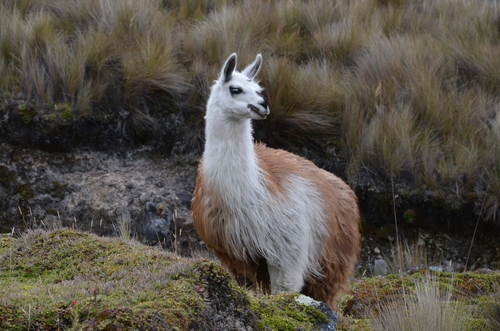
Llama
Llamas, with their soft, woolly coats and iconic long necks, are gentle giants of the Andes. Social and curious, they thrive in herds and are indispensable to local cultures for their strength and wool. Their distinct 'banana' ears and serene demeanor make them both fascinating and endearing.
15-20 years
Lifespan
130.0 - 204.0 kg
Weight
Brown, Black, White, Tan
Color
28 mph
Top Speed
Characteristics
Lama glama, commonly known as the llama, is a domesticated South American camelid known for its long neck, thick woolly coat, and distinctive banana-shaped ears. Llamas are social animals often found in herds, primarily in the Andean highlands. They are known for their ability to carry heavy loads and their gentle, curious nature.
Distribution Range of the Llama
The Lama glama, commonly known as the llama, is native to the Andes mountains of South America. This species primarily originates from the regions encompassing modern-day Peru, Bolivia, Ecuador, Chile, and Argentina. The Andes form the backbone of llama distribution, with these animals being integral to the cultures and economies of indigenous peoples in these areas.
Llama's Habitat
Environmental Conditions
Llamas are adapted to high-altitude environments, typically found at elevations ranging from 2,800 to 4,500 meters (9,200 to 14,800 feet) above sea level. The climate in these regions is often harsh, characterized by cold temperatures, low oxygen levels, and significant daily temperature fluctuations. The vegetation in these areas mainly consists of sparse grasses and shrubs, typical of the Andean highlands or puna ecosystem.
Ecological Niche
Llamas are well-suited to grazing on the Andean highlands' tough, coarse grasses. They play a crucial role in their ecosystem by aiding in seed dispersal and influencing vegetation patterns through their grazing habits. Additionally, llamas have been domesticated for thousands of years and are used primarily as pack animals by Andean cultures due to their ability to carry heavy loads over long distances in rugged terrains.
Copyright @ Nature Style Limited. All Rights Reserved.
 English
English